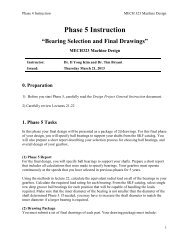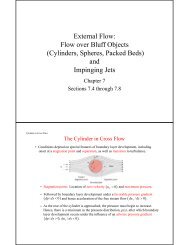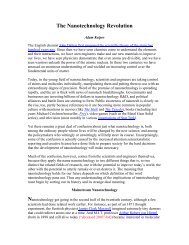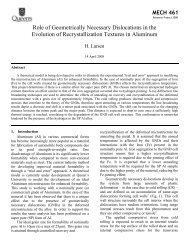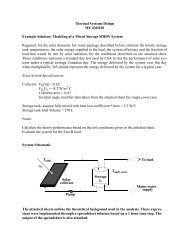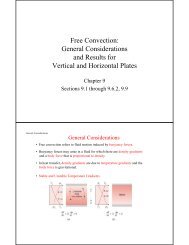Numerical Study of Passive and Active Flow Separation Control ...
Numerical Study of Passive and Active Flow Separation Control ...
Numerical Study of Passive and Active Flow Separation Control ...
You also want an ePaper? Increase the reach of your titles
YUMPU automatically turns print PDFs into web optimized ePapers that Google loves.
(c) wall-normal vorticity<br />
(dark color: ω z = 50 ; light color: ω z = −50<br />
)<br />
Fig. 30. Three-dimensional isosurface <strong>of</strong> components <strong>of</strong> instantaneous vorticity <strong>of</strong> Case 2.<br />
In Case 2, the excitation frequency is f = 15 U / C.<br />
The spectra <strong>of</strong> pressure<br />
fluctuations at x = 0.163C, x = 0.217C, x = 0.312C, <strong>and</strong> x = 0.577C on the centerline<br />
plane near the upper surface <strong>of</strong> the airfoil are displayed in Fig. 31. The first peak from the<br />
left corresponds to f e . The spectrum peaks corresponding to its harmonics at 30 U ∞ / C ,<br />
45 U ∞ / C , 60 U ∞ / C , <strong>and</strong> 70 U ∞ / C are also seen in Fig. 31(a), (b), <strong>and</strong> (c). The<br />
harmonic peaks <strong>of</strong> f e disappear in the spectrum at x = 0.577C as shown in Fig. 31(d).<br />
Fig. 31 indicates that the flow between the vortex generators <strong>and</strong> mid-chord is dominated<br />
by f e <strong>and</strong> its harmonics.<br />
(a) x = 0.163C<br />
33<br />
e<br />
∞<br />
(b) x = 0.217C



